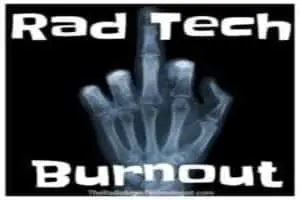
Radiologic Technologist Burnout – Signs, Symptoms & Cures.
Burnout is quickly becoming an epidemic. As a radiology administrator, I get to keep my finger on the pulse of several radiology departments throughout our hospital system.
As a system delegate, I get to travel the country and meet with other imaging directors and exchange stories about current events in our field.
There is a disturbing trend gearing up and it has the formula to be extremely disruptive to healthcare as a whole. An alarming number of radiologists have been experiencing burnout in the last few years.
As of 2018, radiology is the seventh-highest physician specialty where burnouts are occurring (Kane 2018).
It is reported that up to 45% of radiologists are feeling burned out.
This is in stark contrast to its 20th ranking on the burnout list in 2017. If the rads are burning out, you can be sure the techs are right behind them.
It is already known through scientific studies that healthcare workers burnout in their jobs at a higher rate than other sectors due to the emotionally taxing interactions between healthcare workers and patients. (Singh et al, 2016)
An overly stressed radiographer is indicative of an overly stressed radiology department as a whole. Pairing this with our coming baby boomer retirement influx of enormous proportions having an unprecedented impact and you have a recipe for epic disaster (Barr 2014).
So I decided to probe a little deeper and do some research on what is causing employees to burnout. This article will list the responses of a forum of employees that I queried on what has caused them to burnout in past jobs and what is eating at them now.
I will also offer stress-reduction techniques and methods for reversing burnout.
What is a job or career burnout?
- A combination of emotional, mental, and physical exhaustion caused by a demanding job that reaches an unmanageable level.
Burnout is inevitable in any type of work, but those in the medical field face a double threat. Working long hours and doing nightshifts are just a few of the reasons that lead to radiologic technologist burnout.
Burnout does not only affect the radiographer’s job, relationships, and health. It can also adversely affect the patients as well as the organization.
What can lead to radiologic technologist’s burnout?
- Inadequate personnel.
- Uncontrolled traffic of patients.
- Unhealthy lifestyle.
- Ambiguity within the job.
- Lack of proper training.
- Unhealthy work environment.
- Personality traits.
- Inappropriate equipment
- Ineffective leadership
- Trauma cases without debriefing
- Ergonomics – daily wear and tear on the body
- Profitability driving workflow.
- Expanded work duties.
There are many reasons why burnouts occur in individuals engaged in demanding healthcare environments. Radiographers are on the frontline of numerous mental and physical stressors.
Like what?
I will list the potential cause for burnout as the Burnout Situation or BS, (because we all have to deal with this BS at some point.)
Then I will list the problems it can cause.
This will be followed by Suggested Tips to help alleviate the stress and Alternative Tips just to give you a few more options.
Burnout Situation #1
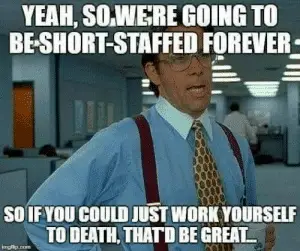
Inadequate Personnel or Understaffing
In the radiology world, there’s a term we use frequently called “skeleton crew.” In a sentence, we would say “We are working with a skeleton crew tonight.”
Typically that means the team is staffed with the bare minimum number of technologists necessary to cover a low volume shift. Usually, this is adequate coverage unless the shift volume picks up.
It is best utilized on holidays and periods of predicted slow exam volumes. However, problems arise for staff when the administration sees that the team can function at this reduced level of staffing.
Then, all of a sudden, it becomes the new norm.
This is one of the primary factors that can trigger a rad tech to burnout (or nurse, or physician…). It arises due to insufficient numbers of staff in the radiology department on a regular basis.
You see, healthcare volumes (aka, productivity), ebbs and flows in a constant and somewhat predictable pattern.
But no matter how much historical data you have in your database, you will never be able to accurately predict the patient volumes at all times.
So if you staff minimally ALL THE TIME, there will be times when the volumes are very high and you don’t have adequate staffing.
When this occurs, the technologists who are present have to labor more intensively and take on more workload than they can handle safely.
Problems it can cause
The main problem besides burning out the employee is the quality of patient care. The quality begins to decrease once the tech no longer has an adequate amount of time to properly see to the full needs of the patient.
Understaffed departments start to focus on the bare minimum to get the exam done at the detriment of patient satisfaction. For example, instead of waiting for additional staff to position or maybe hold a patient in the right position, a tech may use sandbags or other tools to position the patient.
This is less comfortable for the patient but gets the job done. Or the tech compromises the image quality a little by exposing a patient who can’t hold still on their own and the image is a little blurry.
Without adequate staffing, the most challenging patients may be imaged suboptimally. The tech has few choices in this scenario.
Tech Tip: Don’t let yourself get to a point where you make a mistake.
Ali reported giving an injection to the wrong patient. She shouldn’t have been doing this in the first place. She was asked to “help out” by an athletic trainer who was too busy charting. Ali was trying to be a team player by helping out but it was not in her normal routine to give this level of care. Needless to say, the wasted injection cost the company $500.
Toni reported sticking herself with a dirty needle while working in an exhausted state due to her excessive hours of coverage due to short-staffing.
Suggested Tip
If you feel that your patient care is starting to become compromised by the level of understaffing, bring this concern up at a staff meeting. “My patient care is compromised” is not a phrase that management should ignore.
On the contrary, it should give pause to stop and evaluate the situation.
When management asks you to elaborate, you should state simply “Due to the understaffing of our department, we do not have time and/or resources to give proper patient care. And if we DO slow down to do the job we WANT to do, we start hearing about lower productivity on our shift.”
Alternative Solution
Take your time with each and every patient. Make it known to management that you will not compromise patient safety to complete exams faster.
Once your productivity levels start to slide in the negative direction, management should take notice. It is not ethical for anyone to expect the tech to forego patient safety in order to see more patients in a day.
You are a licensed and trained radiographer. You know what is best for your patient. Period.
Burnout Situation #2

Unusually High Patient Volumes
There is no denying the fact that more patients are seeking healthcare and that a huge influx expect in the next ten years from the retiring baby boomer generation.
This is good news in terms of making a profit from providing healthcare. Staffing levels, however, also need to increase to meet demand. Too often staff expansion is reactive instead of proactive.
Administrators wait until the patient wait times become unbearable and people start going to other facilities for care due to extended wait times.
Forcing a technologist to compromise patient care for high volumes is a top reason for them to quit.
The amount of work a radiographer can do in one shift varies depending on the mix of patients they see in a day.
Hospital radiographers spend more time per patient due to fluoroscopic exams and procedures than, say, an outpatient ortho imaging clinic.
The first may max out with 12-15 patients per eight-hour shift while an experienced ortho tech can crank out 40 patients a day with minimal disruption.
This is where an experienced imaging leader is worth their weight in gold. You have to weigh the different environments against benchmarks and past performance in order to establish the proper balance of staff to patient ratios.
Thao says where he works they are understaffed AND overworked. They are also shortening the scheduled exams to make more money. CT w/contrast exams are now being scheduled every 20 minutes instead of every 30 minutes.
Margaret says her site double books MRI exams. If the patient is still waiting on a preauthorization, the slot is double booked. Then when the patient arrives with authorization, you now have an extra patient in an already full schedule. Tech stress goes up due to pressure to get patients done. Schedules become behind and every patient that comes in after that is annoyed because they were taken late.
Problems it can cause
Trying to image too many people in too short of a time frame will lead to four things:
- mistakes
- increased patient wait times
- unhappy staff
- unsatisfying patient care
Suggested Tech Tip
Figure out what your maximum workload is based on your equipment, patient population and skill level. You see your workload so the tracking is already being done.
When your workload gets to 75-80% of maximum capacity, notify your leader. Take note of any particular events that may have triggered that increase in volume.
Were the ordering physicians doubling up on shifts in anticipation of leaving for Spring Break the following week? Did the practice hire a new PA or NP and they are now starting to crank out orders for exams?
Share these variables with your leader and begin to think about how to plan ahead to meet those demands when they happen. For example, ask for the help you anticipate needing a month before Spring Break.
Alternative Solution
Consider what might be slowing you down in your job. Are you the one responsible for burning patient CDs when they bring in prior films? How often is that happening?
Ask your leader if that is the best use of your time or could an office receptionist (at half your salary) be trained to import/export those CDs.
It would make you more efficient and cost the company less to have a receptionist do a non-imaging task.
Are you being asked to retrieve patients from the lobby and return them to exam rooms? Could an office member be better utilized as a runner instead of a radiographer?
Evaluate your daily duties for a week and see if you can find better solutions to how you do your job.
As a leader, I treasure technologists who are able to bring ideas like these to the table for solutions.
Burnout Situation #3

Unhealthy tech lifestyles.
Rad techs who are trapped deep into the intricacies of their work rarely have time for socializing. They also don’t have the time to focus on their personal development and end up neglecting their relationships, often without realizing it.
But psychologists put emphasis on the importance of maintaining relationships and social life, along with practicing self-care, to be in a balanced mental and emotional state. (Goodwin 2017)
Problems it can cause
Gorging on junk food and working late nights are not the ideal lifestyle for any individual either. This, in combination with a lack of physical exercise, can all become the perfect concoction for the ultimate technologist burnout.
Work/life balance has become a common phrase in the workplace today because corporate America is becoming more aware that if employees aren’t happy, they aren’t compelled to give good customer service.
Suggested Tech Tip
Make good use of your Paid Time Off. Use PTO on a regular basis to recharge your batteries and connect with friends and family. It is nice to take a big, one or two-week vacation with family or friends but you need relief throughout the year.
Make an attempt to plan your days off in advance and spread them out throughout the year. The same thing goes for when you don’t feel well. If you feel obligated to report to work even if you feel sick, know that your coworkers aren’t happy about you bringing the potential germs to work.
They don’t want what you have and would appreciate if you stayed home. Not to mention they will be carrying some of your load because you won’t be at 100% if you did show up at work while ill.
Alternative Solution
Consider learning how to meal prep. Preparing your meals for the entire week and making them all on Sunday may take a little time. But each day when you leave your house, your lunch will already be prepared.
It is nutritious and could help you to lose weight since you won’t be eating whatever might be available in the cafeteria or the fast-food restaurant next door. Take along some snacks that are healthy to hold you over until lunchtime too.
Burnout Situation #4

Ambiguity within the job.
Radiology departments are often known for ambiguity in the roles. Not having a clear job responsibility can be just as bad as having too much workload.
Confusion about the roles and not knowing how to conduct oneself within a job is also a potent ingredient for burnout.
Who is in charge? Who is in charge when the leader steps out? What about swing shift after the day shift leader has gone home. Does the night shift have a designated leader? Who covers the outpatient clinic after 6 pm?
Problems it can cause
This situation can also contribute to rad tech stress as they feel helpless with no amount of control within the job. This can lead to a lack of motivation and also a feeling of neglect as they do not feel sufficiently recognized for their role in their department.
Nobody gets recognized as doing a good job if the shift goes well. But if something goes wrong, everyone hears about it, right?
Suggested Tech Tip
Set clear expectations as a team. When a leader has designation, respect that person and position. Do your assigned job to the best of your ability. If you have a newer team member who isn’t quite up to speed on a particular type of exam, offer to mentor.
See one, do one, teach one.
Show them a few times how you do it then ask them to show you. When everyone on a team is competent and comfortable in their roles, the shift can be crazy busy but still run smoothly thanks to a team that knows their roles.
Alternative Solution
Take turns rotating the lead tech position. Own one location of your job. Do you really like the excitement of the traumas from the ER? Take the initiative and offer to be the ER tech for the shift.
Let someone else focus on the OR, outpatients, etc. Be proactive in learning more about your job. Read up on current events from the ARRT, ASRT and your local radiologic society.
Increasing your knowledge of your field may lead to a better understanding of your role as a radiographer and less ambiguity of what you do.
Burnout Situation #5
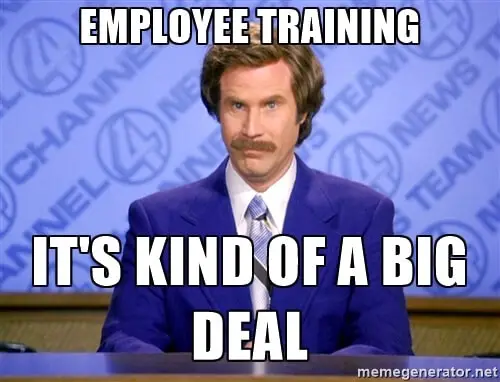
Lack of proper training.
Quite interestingly, lack of proper and sufficient training can also be a significant stressor. How can you be expected to excel at your job if you don’t get fully trained?
Then comes the annual evaluation that grades the level of how well you are doing your job. Being downgraded on an evaluation based on skillsets you were never oriented on can give a push towards burnout.
There are a lot of different types of examinations done in a standard imaging department:
- general x-ray
- ortho / spine
- c-arm in the operating room
- o-arm in ortho OR cases
- fluoroscopy
- speech/swallow studies
- interventional procedures
- ED trauma protocols
While most radiography schools attempt to teach all of this to each student, there is no guarantee that every student sees everything during their clinical rotation.
The basic competencies listed for graduation from a credentialed radiography program are helpful. But if you passed competency in the OR on your first rotation then saw no surgeries on your second rotation, it can easily be a year since your last OR case.
Then you start a new job after graduation and it would be a mistake for an imaging department leader to assume you know how to do everything.
The fact that you may not even see everything on your clinical rotation is why the ARRT allows “ghost comps” or simulated competency exams.
When a radiographer is asked to perform fluoroscopy without having been trained in it, it can be stressful for both the technologist as well as the radiologist and patient.
A senior person in the department might have assumed that because the procedure is a standard imaging exam, a radiographer has been trained on it in school and is capable of performing it on their own.
Ronald Regan, former POTUS, was quoted once saying “Trust but verify.” Trust that your techs know their jobs but verify for certainty.
Problems it can cause
If not properly trained, techs can be placed in situations where they are not capable of capturing a diagnostic image of high quality. Worse yet, they could put patient safety at risk or even themselves and those around them.
Do not perform exams that you aren’t comfortable with and let your leader know why.
Suggested Tech Tip
All imaging departments should have a competency list. Upon hiring, new hires should be scheduled to review this list with a member of the imaging team.
A successful model I have seen employs an Imaging Educator employee who reviews these documents with each employee. The list contains all procedures that any employee could be asked to do including outlying clinics and locations outside of the main imaging department.
If there is something on the list that the new hire is uncomfortable or unfamiliar with, it is the Educator’s job to line out some training in that area for the new hire.
My recommendation for a successful “onboarding” of a new hire and the training they should receive starting day #1:
- one full week training in the operating room
- one full week training in fluoroscopic exams
- one full week training on how the Emergency Room functions
- one full week on how standard exams are done within the general x-ray department
If there are specialty clinics outside of the main department (ortho, spine, etc) and there is a possibility the new hire will be asked to cover shifts there, then they also need training and orientation in those departments.
If you do not receive this type of dedicated training at your job, keep track of yourself of what you feel you missed and politely ask for it. Everyone will be better off if you know all that is expected of you.
It is not enough to say “I’ll just look in the protocol book” if you don’t understand something.
Alternative tip
When there is downtime between patients or a slow shift, ask your teammates to show you how to do some of the things you aren’t super comfortable with and see if you can get better.
The goal is for you to be comfortable performing every type of exam that can come up at any given time. I remember a tech who got called for an exam in the OB operating suite. I think it was for a sponge count after a c-section.
It had been so long since she had been called there that she not only wasn’t sure what to do when she got there but she completely forgot where the OB operating room was located.
Upon arriving, she said, “okay, what do you want me to do?” That did NOT instill confidence for those in the room and it made the imaging department look bad.
Own your job and know what you are supposed to do.
Burnout Situation #6
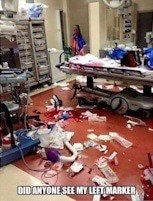
Vulnerable environment
Healthcare institutions are where sick people seek treatment. This fact alone also makes it a hotspot of communicable diseases where radiographers are exposed daily.
This can compromise their health in a significant way. Besides the nosocomial infections from daily work, there are repetitive motion injuries to watch for as well.
A major cause of nonlethal injuries in radiographers, as well as other healthcare providers, is musculoskeletal disorders or MSDs. (Ballinger 2008) These are injuries due to sprains and strains.
Manipulating patients into the correct positions can result in overexerted muscle and micro-injuries. Over time, this can result in conditions such as muscular microtrauma, inflammation, and scar tissue.
An increasing number of patients who are obese add to the physical stress of the rad tech job.
John notes that he is constantly lifting and moving patients that are getting bigger and where he works they are not given proper equipment (like Hoyer lifts).
Problems it can cause
A month doesn’t go by that radiographers find out AFTER they shoot a chest x-ray on a coughing patient that the patient had tuberculosis. Techs are constantly compromised and it isn’t something they could have prepared against.
When the signs are out to protect yourself from airborne or other precautions, technologists comply subconsciously and instantly. But eventually, something can catch up to you. C-dif and MRSA are a constant threat in our job but PPE (personal protective equipment) can usually protect us.
It’s the needle sticks that when we’re tired or not following a protocol that can break through the PPE and cause injury.
Suggested Tech Tip
Slow down, take your time, and follow the protocols that are there to protect you. I’ve seen plenty of nurses who double-glove when they have a concern about communicability.
Don’t be afraid to stop and assess a situation so that you fully understand what is at risk. Do you need to call in a second tech to help you with a compromised patient?
Do you have the appropriate level of PPE ready for when transportation brings down that compromised patient?
Alternative tip
Evaluate your exam rooms at the beginning of your shifts. Make sure all PPE is properly stocked and inappropriate locations. Check your worklist to see what inpatients might be coming down to your department.
Are any of them compromised in any way? Is it possible for you to do their exam portable so you don’t have to bring their germs down to the place you work all day long?
Burnout Situation #7

Personality trait.
Those individuals who have type-A personality are also more vulnerable to rad tech burnout than others. These individuals are predisposed to seek perfectionism and have an inherent need to be in control.
High achieving individuals and those who do not work well in a group are also more prone to stress and ultimately, suffer burnout.
Problems it can cause
If you are a high achiever and work with a tech of opposite tendencies, you may need to figure out a compromise. You are the type who grabs the next exam that needs to be done without deciphering whether or not it will be difficult.
But your partner tends to let everyone else go first and be a bit picky about which exams they want to do. Frustration will build up and it could become volatile.
The first line of action is always to confront your co-worker yourself.
Suggested Tech Tip
Approach the other employee and talk through what they perceive the workflow to be and how it should be triaged. Maybe you’ll discover that there are certain exams they aren’t comfortable doing.
In that case, refer them back up to BS #5 because they need better training. Otherwise, share thoughts on the best way to triage orders as a team through shared responsibilities.
Alternative tip
Agree with your teammates to not let anyone one person bear the brunt of the workload. Watch the worklist and if you see one person continuously ending up with cross-table lateral hips and skeletal surveys, offer to help or take the next one.
Nobody wants to do hard exams all day. And if you DO find someone who likes skeletal surveys… say HAVE FUN and get out of their way. Maybe buy them a coffee.
Burnout Situation #8
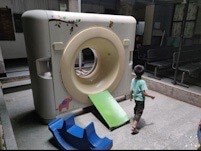
Inappropriate Equipment
Inappropriate equipment can include outdated equipment that barely functions or not having the right equipment at all. Performing radiographic equipment and giving doses of radiation to patients does not make sense if you aren’t using the proper equipment.
Trying to do lumbar spine x-rays with a portable machine is one example. Can it be done? Yes. Should it be done if you want optimal images? Absolutely not.
A good tech will not stay working at a facility that asks them to take care of patients with bad equipment.
Problems it can cause
Having equipment that constantly breaks down is not only annoying but makes for unhappy patients. An end-of-life nuclear medicine camera that constantly breaks down is troublesome on many levels.
It is unfortunate for patients who either have to come back another day to complete the exam they started or reschedule for a later date altogether.
There’s also the decreased productivity reports that call out how the department is falling behind on numbers. And if management is really penny-pinching, a down machine means technologists don’t work their shifts.
If there’s no machine to do exams with, there’s no need to have the techs on the schedule.
Suggested Tech Tip
Know your department policy on how to handle it when a machine isn’t operating properly. Do you call your own internal biomedical department so they can take “first look” at the equipment?
Or are you authorized to call straight to the vendor and log a ticket to fix the problem? Either way, acting on the issue right away will at least make sure it gets fixed as soon as possible.
You also need to notify your leader so they are aware.
Alternative Tip
Much like being understaffed, when equipment starts to compromise patient safety it is worthy to raise that red flag. Plus, you as the technologist are the “subject matter expert” on your modality.
If a nuclear medicine technologist is telling me that their scanner is a safety concern to patients, I have to take notice of that and start an investigative process. Use your knowledge of your field to explain why the equipment is not functioning up to full capacity.
Explain what it means to patient care and productivity.
Burnout Situation #9
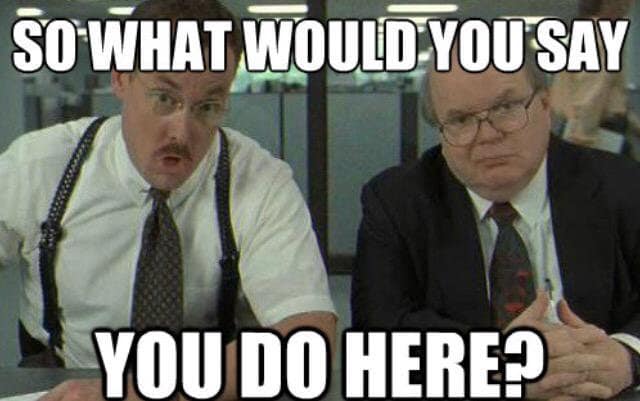
Ineffective Leadership
There’s a popular quote on LinkedIn right now that says “People don’t quit their jobs, they quit their bosses.” We’ve all had bad bosses and we all know what it is like to work for them.
This is one area you really don’t have many options aside from the occasional company survey that goes out to all employees. Take solace in knowing that ineffective leaders typically don’t last very long.
And sometimes upper management brings in tough managers simply to “clean house.’
Dani says it’s not cool being mandated to stay for overtime because of being short-staffed or because other staff called out.
Rayna wishes she could approach ordering physicians and tell them that the imaging exam they ordered in non-diagnostic for the diagnosis in question. She feels discussing this does no good and even results in hostility for questioning orders. Sometimes you feel good that you advocated for the patient but often you just spend your day feeling defeated.
Problems it can cause
Frustrations can arise when frontline staff doesn’t feel like management has their best interest at heart. Be it ethical concerns or just being driven for the sake of maximum productivity, management styles vary widely.
The demoralizing effect of poor leadership can bring down productivity levels and corrupt department culture. Recovering from a bad work culture is one of the hardest things to fix.
And with bad employee culture comes poor customer satisfaction scores.
In healthcare, that is a very dangerous mix since reimbursement rates are often tied to the customer or patient satisfaction.
Suggested Tech Tip
The easiest thing to do when you find yourself at odds with leadership is simply to do your job to the best of your abilities and keep your head down.
Don’t turn a blind eye to inappropriate behavior or improper patient care but don’t do anything to draw unnecessary fire on you either. As mentioned earlier, inadequate leaders typically either move on to greener pastures or are led out to pasture by senior administration.
Check out the administration profiles on LinkedIn and you’ll see most leaders move around every 2-3 years.
Alternative Solution
After evaluating a situation in question, see if you can offer a better solution. Leaders don’t like staff who always bring problems but they do like when the staff brings problems and corresponding solutions.
Do some research on what other facilities do in these same scenarios. Talk to friends you have at other locations and ask their opinions.
In essence, be the change you would like to see in your department by offering ways to make it better.
If you feel you excel in this area, consider going back to school and obtaining a higher degree. Bachelor’s degrees are often enough to get into imaging management. Master’s degrees look even more favorable.
There are some very attractive graduate degree programs being offered online these days and costs have gone down significantly.
Burnout Situation #10

Mental Health Trauma
Radiologic technologists are right on the front line of traumatic events. We’re in the emergency room when multiple vehicle accidents come in or gunshot wounds from violence.
There are a lot of things a rad tech will see that they wish they didn’t. Type A people thrive on the adrenaline rush of traumatic energy.
But everyone deals with trauma in different ways. Most difficult to mentally process are traumas involving children and the elderly.
Problems it can cause
Healthcare workers are trained to do a lot of things but one thing they don’t teach in school is how to decompress after being a part of a traumatic event.
Without the proper knowledge of how to decompress, staff can carry feelings of anger, pain or resentment for a long time after the event has passed.
This can begin to affect mental health, work, and family relationships and overall well-being. Over time, a buildup of witnessing the ugly side of life can be enough to make you want to quit your job.
Suggested Tech Tip
Hospitals employ an internal staff team trained to debrief and decompress faculty after traumatic events. Whether it is Employee Health, Occupational Therapy or an internal traumatic events team, these are the people who are called upon to visit with staff one on one after a traumatic incident.
They are trained to help you express your thoughts and emotions about the event and begin the healing process. Keeping trauma bottled up from work is very unhealthy.
If your job requires you to see things you wish you hadn’t, please seek out the help of these individuals and just spend 30 minutes talking with them.
It may take a few sessions but it will be well worth it.
Alternative Tip
If these types of traumatic events are something that you are just not able to process, that’s okay. One of the great benefits of being a licensed radiographer is the plethora of opportunities that await your skillset.
You can leave the hospital traumas and work in outpatient clinics where the worse thing you’ll see is a minor laceration. Or work for a mobile company that only visits nursing homes with portable x-ray machines.
Do you like to teach? Join a local community college or university and become a clinical instructor in the radiography program. Or work for one of the many vendors who supply our profession with equipment.
They are thrilled to have a technologist who understands the industry from the inside help sell their wares.
Burnout Situation #11

Ergonomics – Wear & Tear on the Body
Working in a radiology department means more than just acquiring diagnostic images. It means getting patients in the right position so that those diagnostic images can be acquired.
This requires helping patients in and out of wheelchairs. Helping them get up on exam tables and back down off of exam tables. In a hospital setting, it can mean physically pulling a patient from the gurney to the scan table and back.
These are just some of the ergonomics behind the physical activity of our day to day jobs.
Problems it can cause
Proper lifting techniques and stretching exercises are a standard part of the curriculum in any radiography program worth attending. We are all trained not to bend at the waist and how pushing is better than pulling.
But there are scores of times where things happen quickly and instinct guides us before best-practice can kick in. Like when a patient is standing at the wall bucky about to get a chest x-ray and starts to fall over.
Our natural instinct is to catch them so they don’t hit their heads. But that can lead to a traumatic back injury on our part.
The same goes for moving a patient on and off your x-ray table by yourself because there is nobody else around.
Suggested Tech Tip
Always ask for moving assistance. If you are a one-person-show in a small hospital and the next tech doesn’t come on shift until 7 am, ask the emergency room for help.
Or ask a transporter or security officer. No one patient exam is worth potentially taking you out of work permanently. Improper lifting techniques is one of the main culprits for injury in radiology departments (source).
Alternative Tip
Consider doing warm-up exercises before your shift. Sonographers are known for having a wall chart hung up on the back of their exam room doors.
This chart reviews the different stretch and warm-up exercises needed to keep them from getting injured every day. The way they have to pinch, squeeze, and rotate their probes can easily lead to carpal tunnel within three years on the job.
Many sonographers end up with shoulder pain from leaning over their patients’ abdomens to scan the left kidney. Our jobs in imaging are not easy in many respects.
Keeping your mind and body healthy can help prolong your career and keep it enjoyable.
Burnout Situation #12

Profitability Driving Workflow
Departments that allow profitability (instead of patient care) to drive workflow means they care less about how stressed the staff becomes and more about how many patients they can schedule in a day.
There are many limiting factors that play on workflow: acuity of patients, condition of equipment, the skill of technologist, and layout of the clinic to name a few.
I’ve seen plenty of clinics where patient volumes are unreasonably high to the point where technologists can barely keep up and patient care is questionable.
This is a scenario where the probability of tech turnover is high because the expectations are unreasonable and unhealthy.
Problems it can cause
A fast-paced imaging clinic can be highly profitable with the right technologists controlling the traffic. But when the scheduling model is taken from the techs and worked from an administrative perspective without input from technologists, you get a recipe for bad patient care and technologist injury.
These hyper-scheduled clinics typically pay better than their hospital counterparts but that does not make up for the risk of injury to the technologist or patient.
I’ve seen busy ortho clinics where techs were doing 50 patients a day each (two techs doing 100 patients) AND they were asked to transport patients to and from the exam AND burn all patient discs to PACS for comparison studies.
This was way too much and presented safety concerns for all involved. You simply can’t give the proper amount of patient care in three minutes. That is how long they had between patients.
Suggested Tech Tip
Just like in Tip #1, you have to draw a line in the sand to protect yourself and your patients. They ay offer really good pay but they have to due to all the turnover of staff.
I’ve seen OB clinics where the OB patients were scheduled every 15 minutes. These were for complete OB studies. For those of you not familiar, a good complete OB study when done thoroughly should take at least 30 minutes if not 45 and that is if there is no abnormal pathology.
To do a complete OB in 15 minutes means you are compromising study quality in exchange for scanning fast. By not having time for a thorough exam means you are potentially missing important pathology and anatomy.
The techs loved the money but the stress of adhering to this mind-boggling pace usually burned them out in six months to a year.
Alternative Solution
If you work in one of these image mills, remember what Jim Rohn used to say to his audience when talking about being unhappy in their current environment: “If you don’t like where you work…move. You’re not a tree.”
Sometimes we feel like we have no options and that we are stuck where we work. This is usually not the case. Familiarity breeds security and staying in one place brings its own comforts.
That doesn’t mean there isn’t something better out there for you. Take a look around, you might be surprised.
Burnout Situation #13
Jack of All Trades
Some of you work in locations that require you to be more than a radiographer. Maybe it started out just being asked to move patients around from lobby to examination rooms.
Maybe you were asked to get vital signs on patients since you were trained on how to do this in radiography school. Before long, you were not only doing all the x-ray work but you were practically filling the shoes of a medical assistant…withou the pay.
Being expected to do more than your job is another reason technologists leave their jobs.
Ashley is a licensed radiographer who also has to do Clinical Assistant duties, apply Durable Medical Equipment to patients (knee braces, fx boots, crutches, etc), and she x-rays 50-80 patients a day in her busy ortho clinic. Lunch? What’s that?
Problems it can cause
It is one thing to be asked to help out when patient volumes in the radiology department are slow. But employers who add on new responsibilities and expect them to be done all the time are really only trying to save a buck.
While radiographers can be asked to assign CPT codes to their exams in an effort to help out with billing, to expect them to fully understand all of the implications of billing is ludicrous.
Asking radiographers to function outside their trained skillset is a risk and should be done on a case by case basis. I have seen techs quit because they were being asked to shovel snow in front of the clinic.
Suggested Tech Tip
Help out when possible. Some common office duties that technologists can help with include inventory, answering phones and light office work.
If you get asked to do billing, medical assisting, or laboratory work it is time to consider sitting down with the office manager and reviewing your job description.
If they are going to save money by asking you to do duties outside of your normal skillset, then a raise in pay may be in order.
After all, if they are saving $13 an hour by not hiring an MA (conservative estimate) then they can afford to pay you $4 more per hour to take on the duties.
Alternative Solution
There are plenty of things a radiographer can do during slow volume days. Continuing education credits are needed every two years for licensure. You could be using your downtime to review the literature and take CEU tests.
There is also radiology news-related sites that can keep you up-to-date on the latest radiology technology. Considering reviewing the following websites to further your radiography knowledge: Aunt Minnie, ARRT, ASRT, and other medical industry magazines.
Don’t forget the QC protocols your machine needs to stay accurate and compliant. Daily shutdown-bootup procedures should not be neglected.
There are other quality control methodologies that might extend the life of your equipment. Ask your local field service representative.
How can you tell if you are getting burned out?
Identifying the signs and symptoms of burnout before it becomes chronic and takes over your life is essential.
If you are experiencing more than two of the following symptoms, it is very likely that you are teetering on the edge of a burnout.
Exhaustion
Extreme exhaustion emotionally, physically, and mentally is typically the first sign of a burnout.
Apart from not having the physical energy to get to work or complete a task, if you feel like you have been totally spent and have nothing left to give, it’s time to evaluate your options.
Health issues
Prolonged exposure to stress without resolving it can result in digestive problems as well as other conditions like diabetes and cardiovascular complications.
Other health problems that precede a burnout are high blood pressure and difficulty sleeping or staying asleep.
Dependence on a substance, being depression, and displaying negativity are other issues that are common symptoms that herald a burnout.
Lack of motivation
Everyone has one of those days when getting up to go to work is a burden. However, if this is a daily struggle, then it is not a good sign. Especially if you have always loved going to work in earlier times.
When you do not find the motivation for work, everything will be mechanical, and you find no joy in going to work, meeting with colleagues, or treating the patients.
Problem focusing
With so many physiological and psychological things happening, your brain will eventually be foggy. You will also be more forgetful than usual, and this can be dangerous when you are a technologist of any capacity.
If you have trouble concentrating on your work or even doing normal activities combined with other symptoms mentioned above, you are on the brink of a burnout.
Negative attitude.
Another clear sign of chronic stress and burnout is having negative thoughts and being depressed. You are more cynical and have trouble keeping your thoughts in check.
Along the same lines, you become easily irritable and cynical about life and things in general. This can have a grave effect on your relationships both at work and at home.
How to reduce stress in a busy healthcare environment?
The healthcare environment is a demanding job, and there are a lot of things that can trigger stress in most people. However, you don’t have to surrender to it or become a victim.
Humans work to live and not live to work. Our top tips on how to reduce stress in a busy healthcare environment are:
Your well-being comes first
Many people struggle with this concept. But it is not about being selfish. If you are well and strong, you can do more than help the patients.
If you are weak and on the verge of breaking down, you are not much help. Jim Rohn used to say “Work harder on yourself than you do on your job.” Think about it.
Every now and then, remind yourself why you become a radiographer. I understand that you care deeply for your patients, but you also need to fight compassion fatigue.
Avoid feeling guilty or blaming yourself for situations out of your control.
Have an active social life
No, I don’t mean going out drinking every weekend. That can contribute to burnout. I mean, cultivate a healthy relationship with friends and family.
You can also join communities and groups of people who share the same interest outside of work. I know a really good Facebook group 🙂
Having a social life outside of work will keep you motivated and invigorated. Even if you don’t like engaging with people, you can cultivate and nurture your interests, which will relax your mind.
Physical exercise is a must
A physical exercise can be as simple as taking your dog out for a walk, which can work wonders for both of you.
If you have the time and the inclination, go for a run or a hike.
At the very least, doing some light stretches can relieve the tension in your body and release endorphins.
Take time to relax
Meditation is not the only form of relaxation, although it is a great option. Many people have their own ways to relax.
Listening to music, cooking, gardening, reading a book or practicing yoga, the possibilities are limitless.
Take a break from technology while you are relaxing.

Improve your sleep
Lack of good quality sleep is the prime reason behind many problems.
Try to get at least 7 hours of sound sleep every single night.
Make good use of blackout curtains, sleeping masks, and soothing music or background noises.
I love the app called Noisli. The fan sound does wonders for my brain.
Speak to a senior peer or mentor
Organizations are beginning to have an increased awareness of combating stress in their workplace.
So, if you have a counselor or a senior person you can talk to, it will be of great help.
Utilize a friend at work to be a sounding board but be careful not to turn it into a negative rant fest.
What are some self-care methods for stress relief?
Self-care is a must irrespective of whether you are in the medical field or otherwise. Indulging in self-care can boost your confidence, relax your mind and body, and generally make you happier.
Some of the self-care methods for stress relief we recommend are:
- Know your priorities – Of course, work is essential, but if your life revolves around it, it’s time to evaluate your priorities.
- Take time to relax – Have a luxurious bath, play your favorite music and dance like it’s nobody’s business, cook your favorite meal from scratch and eat it all. Go out shopping with your best friend or meditate your worries away.
- Take a mini-vacation – If you can get the time, take a total break from work. Or simply take a day off and treat yourself to a relaxing massage at the local spa.
- Nurture your spiritual and emotional life – Whether it is joining a church or other religious activity, community centers, or praying alone, your spiritual life needs nourishment. And so does your emotional life. Try to eliminate toxic relationships and manage anger, sadness, and anxiety in a healthy way.
- Eat healthily – If you are sincere about other aspects but still eat crappy, you will feel like it. Garbage in, garbage out. As boring as it sounds, eating healthy can be detrimental to your overall health.
When is it time to quit your job?
There are many reasons why people quit their jobs. The reasons can range from a toxic environment, lack of growth, better pay somewhere else, and so on.
However, today we are talking about a stressful work environment and how to improve it. Therefore, if you have addressed your stress problems to the authorities and they have done nothing to improve your situation, then it is time to quit your job.
It would be wise to line up your next employment PRIOR to quitting your current job. Plan it right and you might get a nice mini-vacation between jobs.
If becoming a traveling technologist fancies your interest, check out my article here.
Conclusion
Although it seems like a lot of people in radiology are experiencing rad tech burnout, you don’t have to become a statistic. There is always a solution if you know where to look.
Taking care of yourself is an excellent place to start. Some medical practitioners even prescribe medications to combat stress and burnout.
However, if you are aware of your elements and understand your needs, it need not go that far.
A healthy lifestyle and strong social support can also help you manage stressful situations better so cultivate those, and you should be able to stave off a technologist burnout.
References
Ballinger, J. M., Comello, R. J., & Vealé, B. (2008). Stressors That Negatively Affect the Health of Radiology Professionals. Journal of Medical Imaging and Radiation
Sciences, 39(1), 11–15. doi: 10.1016/j.jmir.2008.01.002
Barr, P. (2014). The Boomer Challenge. H&HN: Hospitals & Health Networks, 88(1), 22–26.
Kane, L. (n.d.). Medscape National Physician Burnout, Depression & Suicide Report 2019. Retrieved from https://www.medscape.com/slideshow/2019-lifestyle-burnout-depression-6011056
Goodwin, M. (2017). Work/Life Balance. Best Practices in Healthcare Management Begin with Self. Nursing Economic$, 35(3), 152–155.
Singh, N., Knight, K., Wright, C., Baird, M., Akroyd, D., Adams, R. D., & Schneider, M. E. (2016). Occupational burnout among radiographers, sonographers, and radiologists in
Australia and New Zealand: Findings from a national survey. Journal of Medical Imaging and Radiation Oncology, 61(3), 304–310. doi: 10.1111/1754-9485.12547

